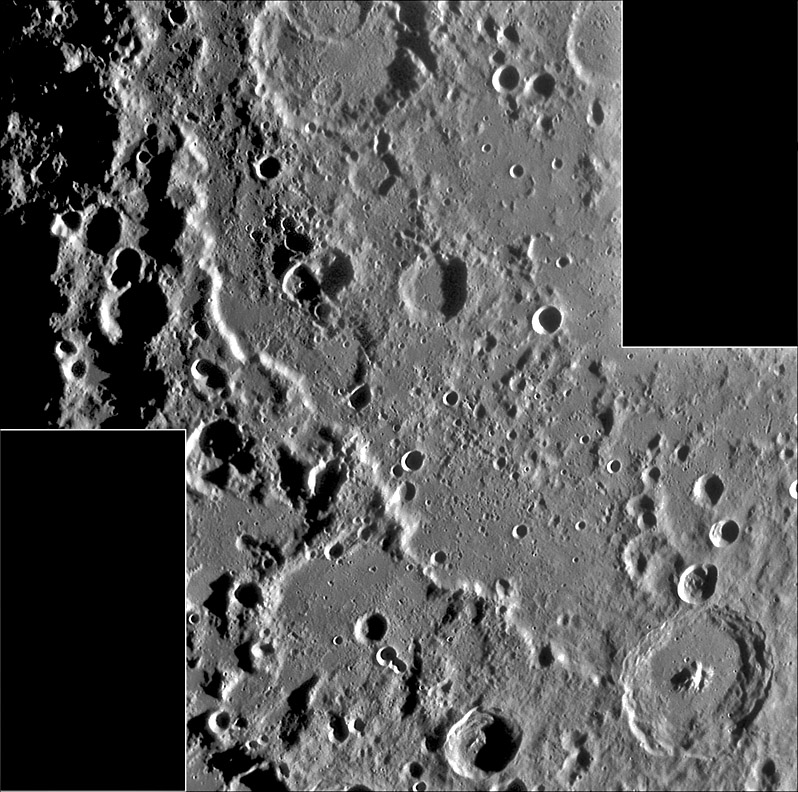
image by Paolo R. Lazzarotti
When thinking of lunar faults, the Straight Wall and maybe the Cauchy Scarp come to mind. But they are minor features compared to the biggest faults on the Moon, which are the rims of giant impact basins. The Altai Scarp, which is the rim of the 860 km wide Nectaris impact basin, is nearly 500 km long and 3 to 4 km high. It is a place where the lunar surface ruptured as a stupendous collapse slid billions of tons of material into the gigantic cavity produced by the Nectaris impact explosion. At the bottom of the scarp face, smooth terrain, reminescent of Lacus Autumni at Orientale, is probably ancient lavas that leaked up along the fault. Topo maps show that the Altai rise 500-1000 m above the surrounding terrain, suggesting that part of the rim topography is due to fallback of Nectaris ejecta. For smaller impact features, fallback makes up about 50% of rim height (and uplift the rest) but we really don’t know the percentages for basin rims. Look closely on the floor of Nectaris and you can see three narrow crater chains and other linear features that extend towards the upper-left of the image. What is in that direction? The younger Imbrium impact basin. This LPOD image is only 50% of the full resolution - here is the high res view!
Technical Details:
4 April 2006, Gladio 315 Lazzarotti telescope (f/25), Lumenera Infinity 2-1M camera, Edmund Optics G filter IR blocked, 235 frames stack out of 2000.
Related Links:
Rükl plate 57
Paolo’s website
Yesterday's LPOD: A Mound of Bumps
Tomorrow's LPOD: Bird's Feet and Droppings?
COMMENTS?
Register, Log in, and join in the comments.



